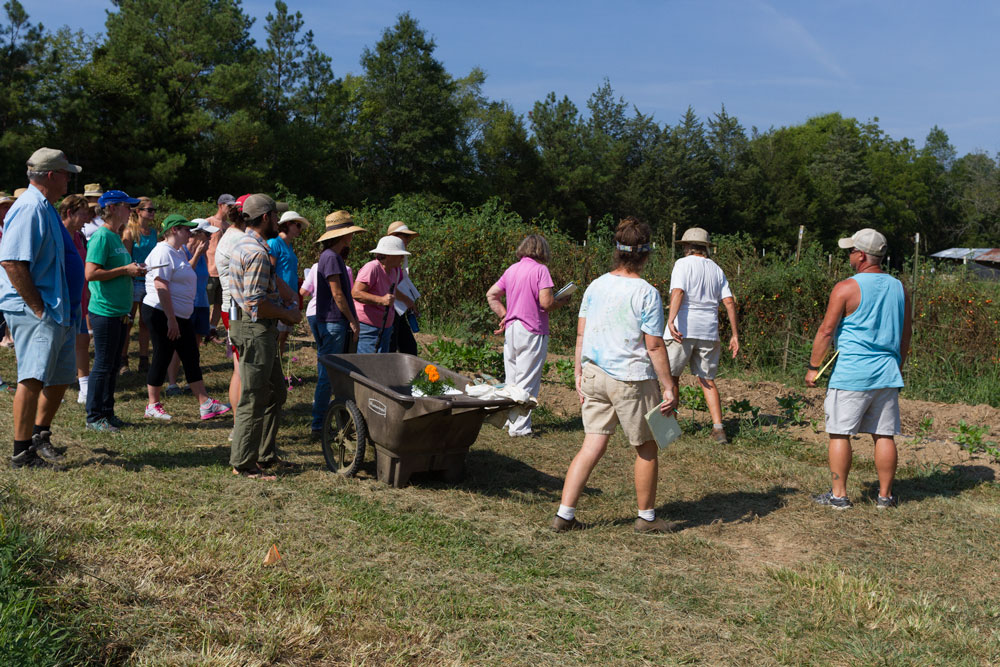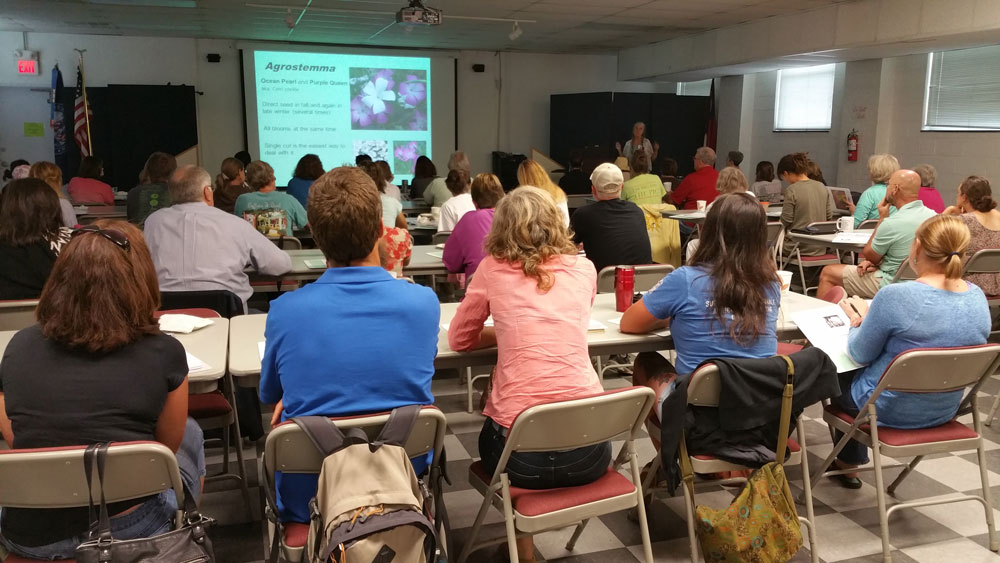Photos From Cooperative Extension’s Cut Flower Workshop
go.ncsu.edu/readext?370216
en Español / em Português
El inglés es el idioma de control de esta página. En la medida en que haya algún conflicto entre la traducción al inglés y la traducción, el inglés prevalece.
Al hacer clic en el enlace de traducción se activa un servicio de traducción gratuito para convertir la página al español. Al igual que con cualquier traducción por Internet, la conversión no es sensible al contexto y puede que no traduzca el texto en su significado original. NC State Extension no garantiza la exactitud del texto traducido. Por favor, tenga en cuenta que algunas aplicaciones y/o servicios pueden no funcionar como se espera cuando se traducen.
Português
Inglês é o idioma de controle desta página. Na medida que haja algum conflito entre o texto original em Inglês e a tradução, o Inglês prevalece.
Ao clicar no link de tradução, um serviço gratuito de tradução será ativado para converter a página para o Português. Como em qualquer tradução pela internet, a conversão não é sensivel ao contexto e pode não ocorrer a tradução para o significado orginal. O serviço de Extensão da Carolina do Norte (NC State Extension) não garante a exatidão do texto traduzido. Por favor, observe que algumas funções ou serviços podem não funcionar como esperado após a tradução.
English
English is the controlling language of this page. To the extent there is any conflict between the English text and the translation, English controls.
Clicking on the translation link activates a free translation service to convert the page to Spanish. As with any Internet translation, the conversion is not context-sensitive and may not translate the text to its original meaning. NC State Extension does not guarantee the accuracy of the translated text. Please note that some applications and/or services may not function as expected when translated.
Collapse ▲The Chatham County Center of North Carolina Cooperative Extension conducted a two-day workshop for farmers on Growing Cut Flowers for Market. The first part on August 10 was an all-day workshop with about 60 participants. We covered all aspects of cut flower production, from seed to market. View the complete agenda here. The second part was held August 17 at Perry-winkle Farm in northern Chatham County. We divided the participants into two groups, one led by Perry-winkle Farm grower Cathy Jones and the other led by grower Leah Cook of Wild Hare Farm. Participants got to see all aspects of cut flower production, from producing transplants to harvesting and postharvest handling. We discussed irrigation, tractor equipment, hand tools, trellising, fertility and cover crops, pest and disease management, deer fencing, record-keeping, and more.
Feedback from the post-workshop evaluations was excellent:
- 98% of participants said they would be able to select appropriate species/cultivars and improve production and postharvest handling techniques to increase cut flower quality and yield as a result of the workshop
- 98% of participants said they would be able to save money by only applying the fertilizers necessary to grow a healthy crop as a result of the workshop
- 90% of participants said they would be able to make improvements to their irrigation system and thus conserve water and save money as a result of the workshop
- 98% said they would be able to increase farm income from cut flower sales as a result of the workshop
All photos by Debbie Roos, Agriculture Agent.

Participants received a knuckle knife for harvesting flowers and got a chance to try it out on an old gomphrena bed.

Cathy Jones (white hat on right) gives tips on how to use the knuckle knife to harvest gomphrena at Perry-winkle Farm.

Looking at newly planted zinnias in the field. Cathy does several plantings of zinnias over the summer.

Cathy demonstrates how to select sunflowers at the proper stage for harvesting, and then how to strip the leaves in the field. Knowing when to harvest flowers is very important to achieving a long vase life. Usually the optimal time is well before they are fully open but varies by species.

Sunflowers should be harvested when one or two petals are just starting to lift off the center disk.

Both Cathy and Leah discussed how important proper watering was in the greenhouse. Leah demonstrates how to water newly seeded flats without washing seed away.


















